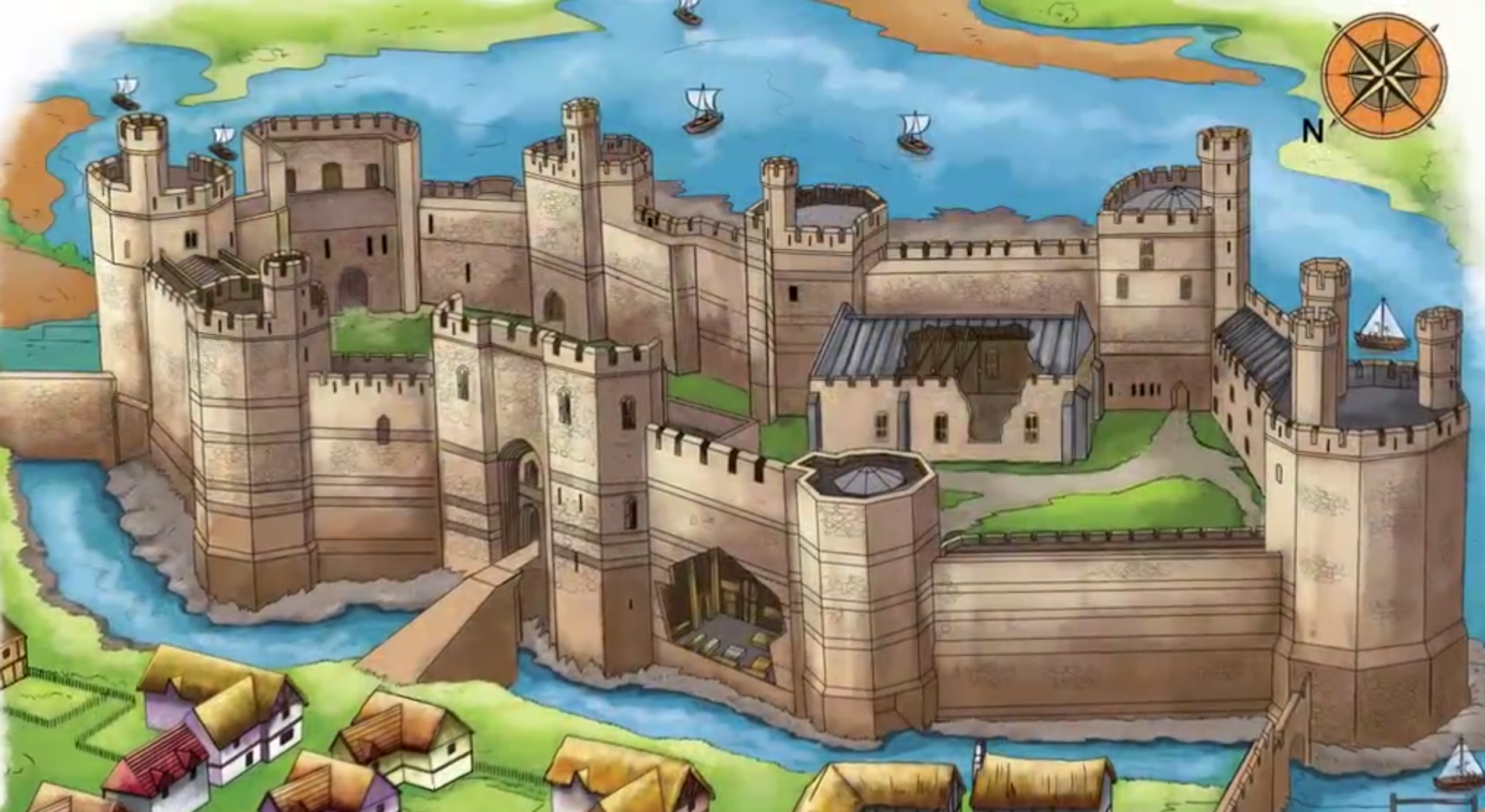The way AQA have included the Historic Environment (HE) study in their specification is an absolute gift to students and teachers. Rather than having an extra paper to think about, the HE is embedded seamlessly into the highly engaging British Depth Study units. Our department ‘sells’ this section of the course to our budding historians by reminding them that they know for certain what Question 4 of this paper will be about, and that there is only a limited amount of questions that can be asked about each site – basically, they can go into the exam with confidence, knowing that as long as they know their stuff, question four is probably already ‘in the bag’.
As teachers, the HE site changing every year enables us to really deepen our knowledge of different sections of the course over time – I must admit, I feel like quite the expert on the Spanish Armada at the moment! We have found that it is best if we teach it embedded into the British Depth section of our course, changing where we deliver it each year, depending on where it would be most appropriate. This prevents the HE from becoming a ‘bolt on’ to the GCSE course. However, if you do decide to deliver this at the end of the Depth Study, students can do further research on the section required, and those aiming for Level 4 can really consider how the HE fits into the wider context of the period, as they have a secure understanding of the whole period.
To support teachers, AQA provide excellent resource packs for each site – these can be given to students as a pack, or adapted to form part of an enquiry in class. Of course, you cannot beat a visit to the site itself (over 75% of the students that attended our trip last year actually got half the marks or above on this question!). If you can’t make it though, the Oxford AQA GCSE History Kerboodle animations are the next best thing: not only do they give you a virtual tour of the site itself, but they give you a practice exam question for each site, and a suggested summary of how it could be answered.
We like to organise a lecture in our school theatre too: the whole History cohort comes together to discuss the history of the site, particular features, events and people linked to it, and what questions could possibly come up. Each class can then go away and do their own enquiry and exam practice depending on their needs and abilities.
2019 AQA Historic Environment sites
The sites for this year are superb – Pevensey Castle has great links to the Norman conquest itself, and shows how castles became a way for William to control England, as well as defensive structures for the new oligarchy. Caernarfon Castle was a part of Edward I’s ‘Iron Ring’ of Welsh castles. His eldest son, Edward, was even born there, and became our first Prince of Wales – this is obviously something that links to the wider context of Edward’s conquest of Wales.
As I’m teaching the Elizabethan unit, I’m thrilled that we’re studying the Globe Theatre. The Globe shows just why this era is known as the ‘Golden Age’: culture was flourishing, and the social structure starts to become less rigid. Theatres themselves were microcosms of this huge change. Do I even need to mention the links to the Bard himself, William Shakespeare? I am a bit jealous though, that those of you teaching the Restoration get to look at Ham House, a beautiful example of a Restoration house, home to one of the power couples of the day – the Duke and Duchess of Lauderdale. The house is a brilliant reflection of changing tastes of the time. You can even link the European influence to Charles’ time spent in exile on the continent.
How to tackle the question
No matter which site you are teaching, students will need to consider a similar range of questions:
- Motivation: What was the motivation behind constructing purpose-built theatres, like the Globe? What was the motivation behind creating a luxurious home like Ham House – what were the Lauderdales trying to prove? Why were Caernarfon and Pevensey Castles built at the time?
- Location: What was the strategic importance of the locations of Pevensey and Caernarfon? Why is Ham House located close to the seat of royal power? What was it about Southwark that made Shakespeare put the Globe there?
- Function/purpose: What was the main function of a castle like Pevensey of Caernarfon? They have other purposes besides defense – what are these? Stately homes like Ham House were made for showing off essentially – but what other purpose did they serve? What were the functions of the different parts of the Globe?
And to consider the wider context:
- Structure: What can the structures themselves tell us about culture, values, society, fashion, developments, changes and technology of the time?
- People and events: Which key people in our Depth Studies are linked to the site? Which key events are linked to the site? What does the site tell us about the period itself?
Top tip!
Ultimately, my top tip to you and your students would be: don’t just write a narrative about the site in question, regurgitating everything you know. Answer the question focusing on the wider period, and use the HE site as a ‘source’ to support the points you are making. For Level 4, students need to analyse how the chosen site really tells us about changes, developments or key aspects of the wider period being studied, rather than seeing the site in isolation.
Good luck to you and your students with the HE studies this year, I hope you enjoy teaching this section of the course as much as our department does. As sad as it sounds, I’m already on countdown for next year when I can visit Kenilworth Castle, the Elizabethan HE for 2021!
 Laura Kibble is a History teacher and Humanities Second in Faculty in a secondary school in Wolverhampton. She is part of the Oxford AQA GCSE History author team. Follow her on Twitter for ideas and resources!
Laura Kibble is a History teacher and Humanities Second in Faculty in a secondary school in Wolverhampton. She is part of the Oxford AQA GCSE History author team. Follow her on Twitter for ideas and resources!

